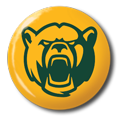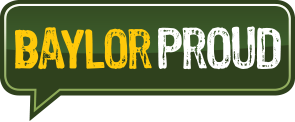Summer research opportunities take Baylor students all over the nation

As Baylor students returned to campus for the start of the fall semester, many brought back experiences gleaned from real-world research opportunities over the summer. While it’s impossible to capture the breadth of student summer research, here are three opportunities that drew students away from campus and into the field this summer:
Addressing Hidden Homelessness — After her first year in Baylor’s joint Bachelor of Science in Public Health and Master’s of Public Health program, Grace Hall spent the summer back home in the Philadelphia suburbs working with Phoenixville Women’s Outreach, a community organization that empowers women through transitional housing and more. Hidden homelessness is an issue in many communities, including Phoenixville, and Hall was impressed by the organization’s approach to providing women with resources in education, support and more to help them find self-sufficiency.
As she got to know the women in the outreach and saw community needs up close, she was inspired to create a needs assessment to determine wellness needs within the community. Utilizing the center’s network of community connections, organizations around town distributed the survey designed to measure the strength of resources in the community across nine dimensions of wellness. After receiving nearly twice as many submissions as she had anticipated, Hall presented findings to the Phoenixville Women’s Outreach Board and plans to roll out an education forum to address areas that scored lowest in the community.
“There’s always a sense that you have to look far for opportunity to do important work,” Hall says, “but I’m thankful to have been able to do so right in my next-door neighborhood.”
Pollution and Thunderstorms — When Baylor professors receive significant research grants, that funding creates opportunities for students, too. Take, for example, the $900,000 grant Drs. Rebecca Sheesley and Sascha Usenko of Baylor’s Department of Environmental Science received last year from the U.S. Department of Energy to study the impact of urban pollution on thunderstorm activity.
To collect the data necessary to unpack the relationship between pollution and weather, Sheesley and Usenko have outfitted a 22-foot trailer with monitors capable of gathering information about aerosols, gases, organic compounds and more. Inside the trailer is a mobile lab that students can utilize at locations in and around Houston, the geographical center of the study.
Among the many students involved are Kimberly Sauceda, a graduate student working on her first field campaign. The hands-on opportunity provides experience for students to operate important instruments within the lab (pictured above), and the chance to build connections working with collaborators from other universities.
“It’s really interesting,” says Sauceda. “I’m learning so much about how to use equipment and gather information that I haven’t done before, but I’m also getting to teach newer students that have come in. It’s enabling me to grow in ways I haven’t in the past.”
Open Doors at NASA — Charyle Baker, a junior mechanical engineering major from Waco, is spending the fall at NASA Langley Research Center in Virginia, and she’s going in with experiences gleaned this summer while interning with a NASA contractor in North Texas.
Baker worked on research projects at Carbon-Carbon Advanced Technologies (C-CAT), working in high-temperature composite materials. Specifically, she participated in research studies studying how energy travels through specific materials and creating a program to standardize how C-CAT manufactures mechanical testing samples. Now, she’s at Langley, taking classes remotely while enjoying her internship. She’s working in many of the same areas of research, and is just down the hall from NASA’s top materials science experts — and is onsite when a major mission launches.
“It’s great to be able to tell people you’re a NASA intern, and I’ve enjoyed getting real industry experience,” Baker says. “It’s interesting to work in research while also working on the manufacturing and quality control side.”
Whether close to home or around the world, it’s incredible to see Baylor students engaging in research at all levels, growing as professionals as they fling their green and gold in industry, with other universities, and in their hometowns.
Sic ’em, student researchers!

